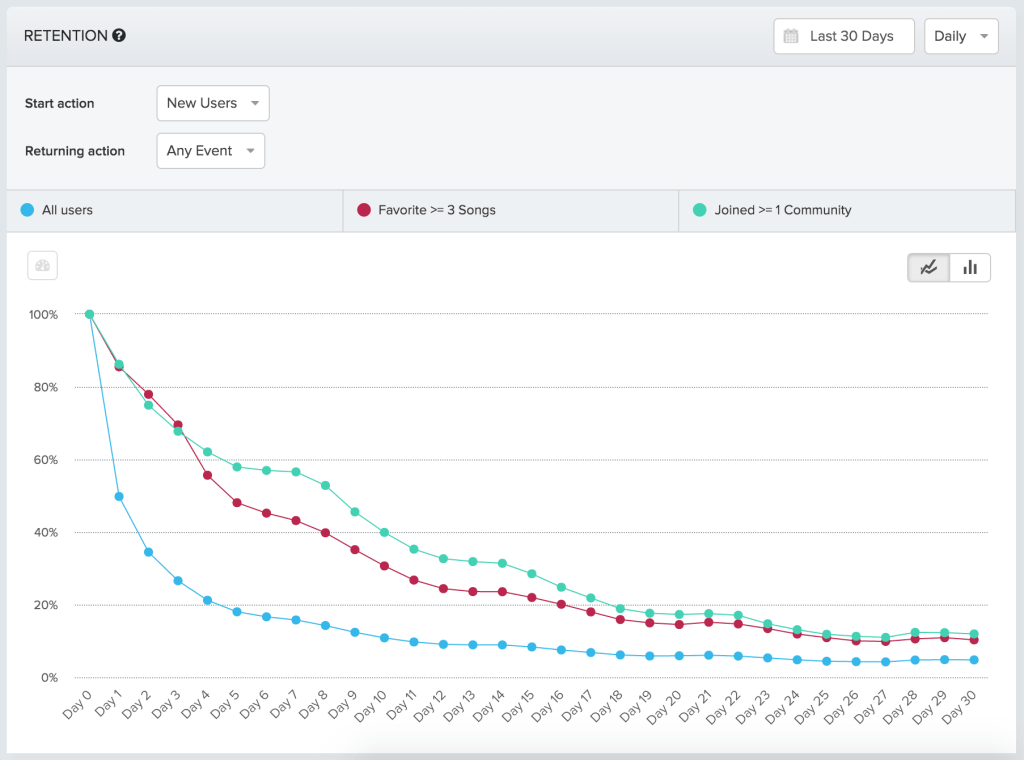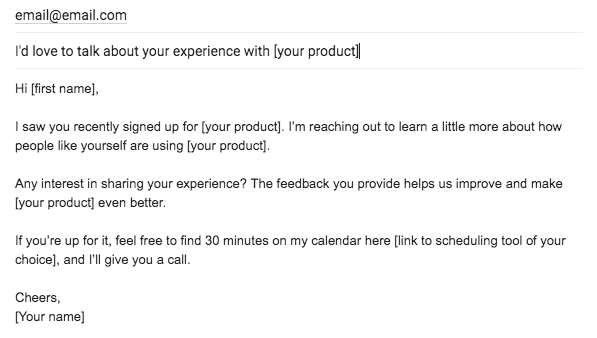How to identify your product’s activation metric

.png)

.png)
Editor’s note: This article was partially adapted from a talk—The Dangers of Activation—given at the 2019 Product-Led Summit.
Activation goes hand-in-hand with the all-important aha moment—the moment a user realizes your product's promised value and starts to achieve success with your product.
If your user activates quickly, your chances of turning them into a paying customer skyrocket.
Fail to do so, and you have one leaky bucket on your hands.
With the rise of product-led growth, activation is arguably the most critical SaaS metric to measure and optimze. That’s because although activation occurs early on in a user’s journey, it has a lasting impact on customer satisfaction, success, retention, and revenue.
Activation is, no doubt, a tough metric to get right. So how, exactly, do you go about identifying it? The task can be broken down into 4 broad steps:
Below, we’ll go through each step in more depth.
Look at users who are already getting value from your product. Retained users are activated users—find out what sets them apart from the folks who churned.
Dig into your product analytics and use cohort analysis look at common patterns of behavior by asking questions questions like:
Make note of the patterns in your behavioral data to identify the early, critical actions that retained users take within your product. Then, figure out how strongly these actions correlate with long-term customer retention.
Imagine your product is a music app and you've identified 2 actions that seem likely to trigger an aha moment within a 30-day time frame:
To understand their impact on retention, you’d want to plot out each of these actions along a retention curve.

In the image above, the 30-day retention of all users is plotted out in blue. For a cohort of all users, roughly 5% are left by day 30. We can see that retention almost doubles for users who favorited at least 3 songs is. The retention for users who joined at least one community is even higher—12%. That means your primary aha moment is joining at least 1 music community.
In this scenario, the percentage of users who join at least 1 music community is your primary activation metric, while the percentage of users who like 3 or more songs is a strong secondary activation metric. These are the actions that you’d want to drive users toward as soon as possible after signup to improve activation.
At this point, there are scores of great analytics platforms out there that can help you into the numbers to get an understanding you product’s activation metrics. Some of our favorites include:
These tools can give you invaluable insights and help you identify the activation metrics that you need to optimize. And if you were feeling lazy, you could probably get by reasonably well with this quantitative data.
But to get the full picture, you really do need some qualitative feedback. That’s why, after you’ve done behavioral analysis and formulated some hypotheses about your likely activation events, it’s important to validate your assumptions by actually talking to your users.
To understand your product’s activation experience from your users’ perspective, you should interview people who have recently signed up for your product.
Of course, this is often easier said than done. If you’re not sure how to get started, try sending a simple email like the one below:

If you’re having trouble recruiting interviewees, you can also try offering a $50 gift card as an incentive. Money talks, after all.
Once you have your meetings scheduled, come up with a list of questions to help you understand a user’s jobs to be done (JTBD). Ask open-ended questions like:
You want to try to understand what your users actually do in your product and whether it lines up with what they say they’re doing (you’d be surprised how often they don’t).
You can do this by implementing a product like FullStory and watching user recordings. The beauty of this approach is that you’ll be able to quickly see what’s getting in the way of your users’ activation.
Andrew Capland, Director of Marketing at Wistia, finds this one activity so invaluable that his growth team regularly meets up for "FullStory Fridays"—the team grabs their lunch and watches session recordings of people using their product.
You can learn a lot by sitting down and watching users actually use your product. Your engineers can catch bugs that weren’t supposed to be there, your designers can understand how people really interact with the interface, and everyone can get an important reminder of the real people on the other end of their work.
Watching user recordings can help you to pinpoint the places where your users are getting frustrated and to identify the possible fixes that will have the biggest impact on your activation rate.
Finally, you should be leveraging your customer-facing teams.
Your customer success, support, and sales teams talk to your customers every single day. They are sitting on a treasure trove of invaluable information and are acutely aware of many of the pain points that your users have.
Grab a coffee or tea with them and ask how they would improve the user experience. If this isn’t standard practice at your company, prepare to be surprised at how great their feedback is.
Once you’ve gone through the steps above, you should have a pretty solid idea of what your product’s activation metrics should be. But let’s take it a step further and put your assumptions to the test.
Ask yourself:
You should be able to answer “yes” to all 3 questions. If that’s the case—congratulations! You’ve successfully identified the moment of activation within your product and have an activation metric that you can measure.
Now, you can start optimizing for it!
Check out this article for insights on improving your product’s activation rate—plus, 3 common activation pitfalls and how to avoid them.